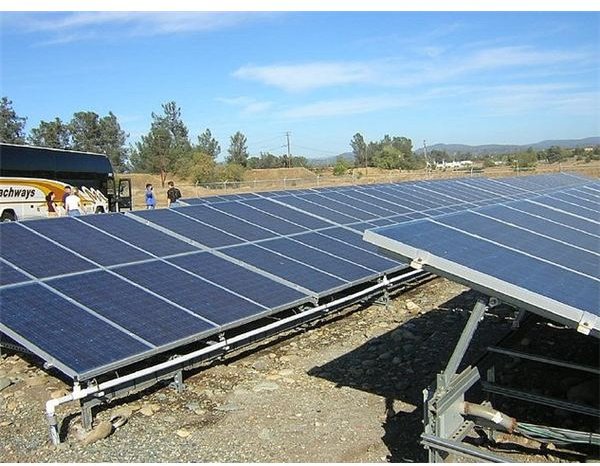Common Types of Green Technology Reviewed
Introduction
Against the backdrop of the world’s undeniably diminishing supply of fossil fuels and their ever-growing financial cost, alternative technologies had to be invented. As the Earth’s population grows, ever greater demands for energy are created. And among the baffling array of different types of green technology, also known as ‘clean technology’, certain favorite front-runners have emerged. These include solar power and wind power. Both harnessing the natural elements, these two entirely renewable sources of energy possess great appeal. Just two of the practical applications of green technology are vehicles which run on electricity and homes that rely on geothermal heating.
Solar Power
Solar power simply amounts to technology that deploys the sun’s rays. From major solar power plants in Canada, Spain and California to the modest use of solar panels, purchased from DIY stores, on individual homes worldwide, the rise of solar energy is one of the success stories of the green revolution. Its growth, nevertheless, has been slow. Certain developments, particularly in Germany and Spain, have helped solar power to become more popular. In both of these nations, consumers sell back to the electricity grid their spare power.
When talking about green computing, photovoltaic solar panels are a fine example, as they can easily power a computer lab due to their feature to convert electricity directly into electrical energy. These solar panels are specifically suited for places where there is no AC power available, and they come in wide variety of sizes - you can acquire a small panel which will create enough electricity to run a lab for example, while on the other side, there are large installations that can run large computer facilities. Microsoft and Google already installed these large installations on some of their facilities.
Wind Turbine

One of the types of green technology that has minimal environmental impact is the wind turbine. While some people might object to the sight of wind farms dotted across the landscape, it cannot be denied that they are a superbly clean and eternally renewable energy source. Not only that, onshore wind is a very low-cost solution. Individual home-owners can exploit this power source, too, by erecting a wind turbine on their premises. This is not a choice open to everyone, of course, as it requires a certain amount of land. In some US states, the objections of neighbors have prevented home owners’ plans to install a wind turbine. Nevertheless, the positive advantages of wind-generated electricity are widely acknowledged. Enlightened governments buy back excess electricity, just as occurs with solar energy, and back in May 2009, a total of 80 nations were harnessing wind energy as a green alternative.
There is a fantastic example of computing facility run by wind turbines, which can be seen on Arizona State University’s Global Institute, and although this solution tend to be a bit expensive, it is a great way to reduce energy costs, but what’s more important, it reduces carbon dioxide emissions significantly.
Geothermal Power

Another of the types of green technology to be acknowledged as having a strikingly benign effect, while being low-cost, is geothermal power. Used as a means of free heating by savvy homeowners, geothermal power deploys the warmth beneath the earth’s surface. While regional variations dictate how much heat is available, pumps and other additional technology make it possible for homeowners and self-builders to take advantage of geothermal possibilities around the globe. Among the types of green technology to have emerged in recent decades, geothermal power has to rate as one of the most passive, and hence harmless.
Geothermal sources can be used to generate electricity, while they can also be used for heating and cooling homes and facilities. When talking about the computing sector, its ability to cool is definitely worth considering on server farms that generate constant heat and therefore require constant cooling.
Conclusion
Few of us are unaffected by green technology. Indeed, for many, accessible and affordable green technology is a top priority. Knowledge about the choices available is easily obtainable and public pressure is helping to make these advanced technologies far more widespread.
References
https://www.darvill.clara.net/altenerg/geothermal.htm
https://www.otherpower.com/otherpower_solar.html
https://hubpages.com/hub/Green-Technology
Image Credits
https://www.flickr.com/photos/95391240@N00/38288928/ (Attribution License)
https://www.flickr.com/photos/lydur/2333879736/(Attribution License)
https://www.flickr.com/photos/86624586@N00/10198405/ (Attribution License)
